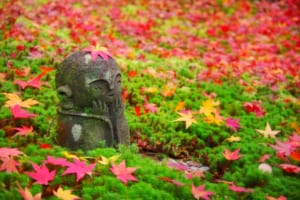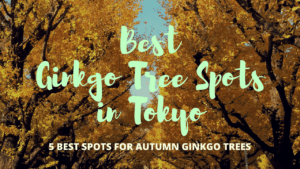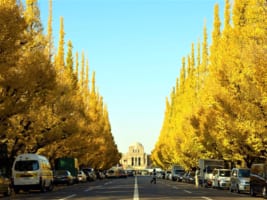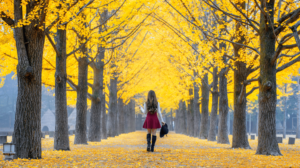7 Days Itinerary in Tokyo in Autumn
A Prefect 1-Week Autumn Itinerary in Tokyo
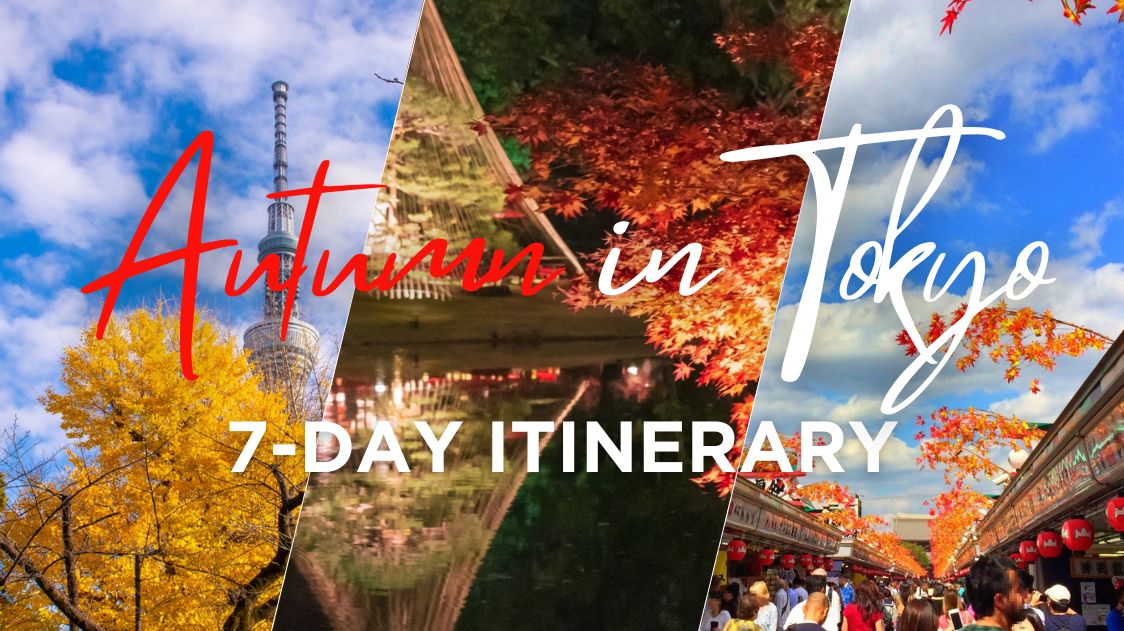
Get ready to dive into Tokyo’s autumnal wonderland! This is the season when the city’s neverending energy meets the quiet beauty of fall foliage. Not as famous as the spring season sprinkled with sakura, the warm golden hues of Autumn mark an excellent opportunity to see another side of the world’s largest metropolis.
If you have a full week to spare for this city, we have packed a nice adventure with a little bit of everything, including day trips to iconic spots so you can round up your experience with a little escapade closer to nature.
So grab your camera and your most comfortable walking shoes; this seven-day itinerary in Tokyo in Autumn is about to take you on a Tokyo journey you won’t forget.
See also: Japan Autumn Itinerary for 14 Days
Are you thinking about Spring in Tokyo instead? Look no further: 1 Week Spring Itinerary in Tokyo
*Please note that this article contains affiliate links
<<Book your Tokyo Wide Pass here!>>
Don’t miss our guides for transportation passes: Best Train Passes in Japan & Tokyo Subway UNLIMITED Pass: How to Get and How Much You Can Save
Day 1: Ueno and Asakusa
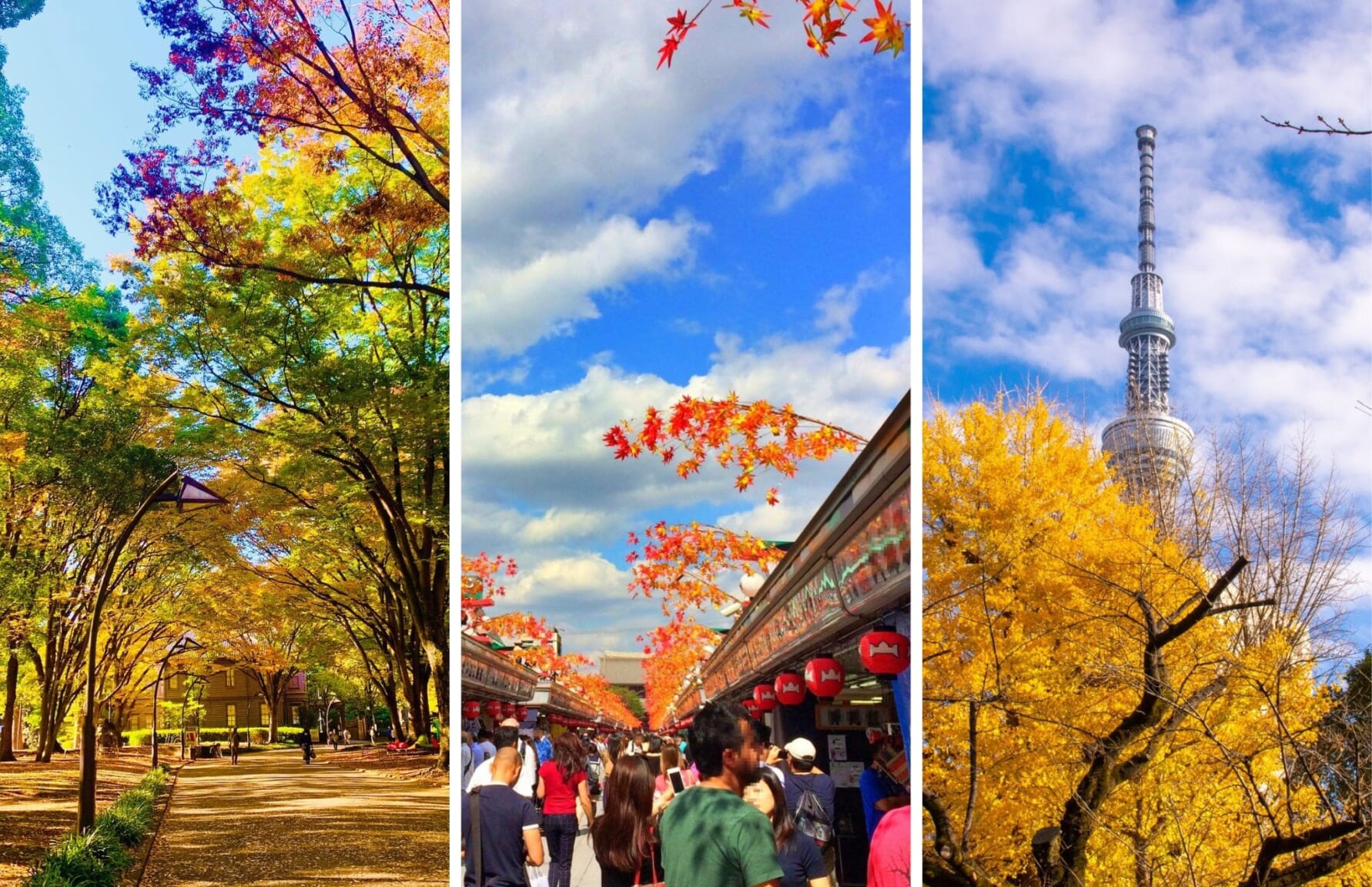
Next, make your way to Nezu Shrine (根津神社). The red torii gates of this shinto shrine are Instagram-worthy, and the surrounding trees are dressed in their autumn best. The garden offers a quiet moment of zen before you dive back into the more bustling areas of the city.
Your next stop is Asakusa. Sensoji Temple (浅草寺) is a Tokyo classic, and Nakamise Street is your go-to for street food and all kinds of souvenirs. One of the popular local specialties is the Ningyo-yaki, small doll-shaped sponge cakes filled with sweet red bean paste.
As the sun sets, head to Tokyo Skytree (東京スカイツリー). The elevator whisks you up to panoramic views of the city. If you’re lucky, you’ll catch the autumn leaves from a bird’s-eye view. The Skytree also offers dining options, making it a good spot for dinner.
More ideas around Ueno and Asakusa: 12 Best Things to Do in Ueno & 20 Best Things to Do in Asakusa
Day 2: Shibuya and Meiji Jingu
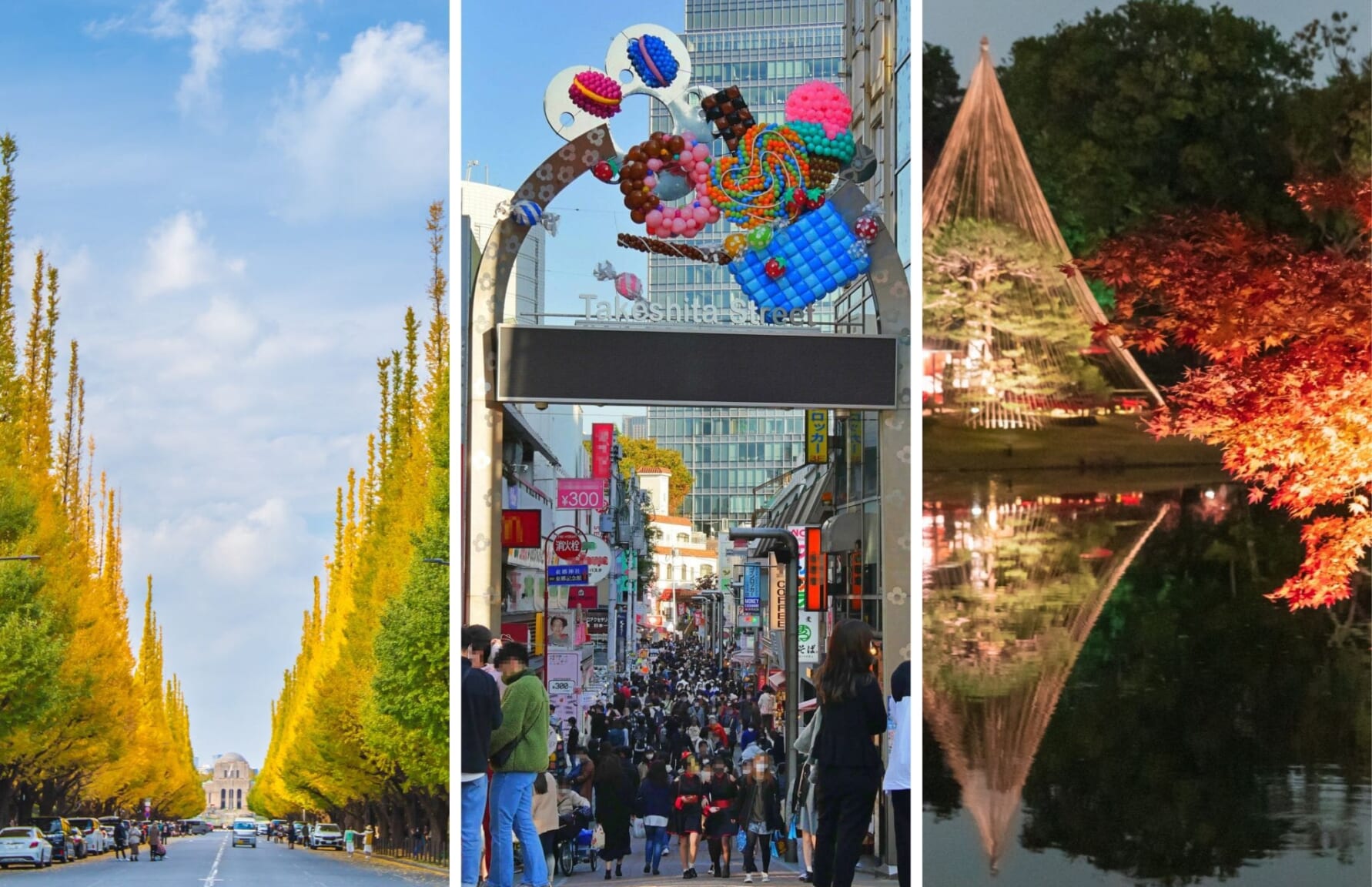
Otherwise you can try your luck paying for 1h at the Shibuya Tsutaya Share Lounge on the floors above or maybe hunt for some cool photo spots in the area. Shibuya is a large entertainment and commercial area, so if you’re interested in doing some shopping, it’s a good opportunity.
For a change of pace from Shibuya’s energy, transition to the tranquility of Meiji Jingu Gaien (明治神宮外苑), where Tokyo’s golden ginkgo trees steal the show. The avenue lined with these trees is a sight to behold, especially when the leaves have turned a brilliant gold. Bring your camera; this is a photo op you won’t want to pass up.
And then take a stroll around Meiji Shrine (明治神宮), the most important Shinto shrine in the city. Shrouded in dense foliage, you will feel like taking a peaceful walk in the woods. On your way there you could stop by Harajuku’s Takeshita Street (竹下通り), a bustling alley filled with trendy boutiques, cafes, and street food stalls. Don’t miss out on trying a Harajuku crepe, a sweet or savory stuffed crepe that’s as delicious as it is photogenic.
As evening falls, make your way to Rikugien Garden (六義園), famous for its nighttime illuminations of autumn leaves. The trees are lit up in a way that enhances their natural colors, creating an almost ethereal atmosphere.
More ideas around Shibuya and Harajuku: 22 Best Things to Do in Shibuya & 20 Best Things to Do in Harajuku
Day 3: Tokyo Disney Resort

Today is all about embracing your inner child at Tokyo Disney Resort. The moment you step through the gates, you’re greeted by the Halloween spirit. Pumpkins, cobwebs, and Disney characters in Halloween costumes set the stage for a day of magical spooks.
First up, head to Cinderella’s Castle. It’s not just a photo spot; during Halloween, it becomes the backdrop for special events and parades. Mickey, Minnie, and the gang are dressed in their Halloween best, and you should be too. Don’t forget to grab a pair of Halloween-themed Mickey ears!
Lunch is an adventure in itself. Seasonal Halloween menus offer treats that are both delicious and Instagrammable. Besides the usual rides, the parades are the highlight. Characters floats, and dancers fill the streets of the park, all set to catchy tunes that you’ll be humming for days. Each parade has a Halloween twist, making them extra special. As night falls, the park transforms. Spooky lighting effects and Halloween-themed shows take over, culminating in a fireworks display that lights up the sky.
<<Book your Tokyo Disney Resort tickets online here!>>
▽More information about Tokyo Disney Resort during Halloween▽
▶Disney Halloween at Tokyo Disney Resort
▶Tokyo Disneyland Guide: Best Things to Do
▶Tokyo DisneySea Guide: Best Things to Do
▶How to Get to Tokyo Disneyland and DisneySea by Bus or Train
▶Where to Stay near Tokyo Disneyland and DisneySea
Day 4: Nikko Day-Trip
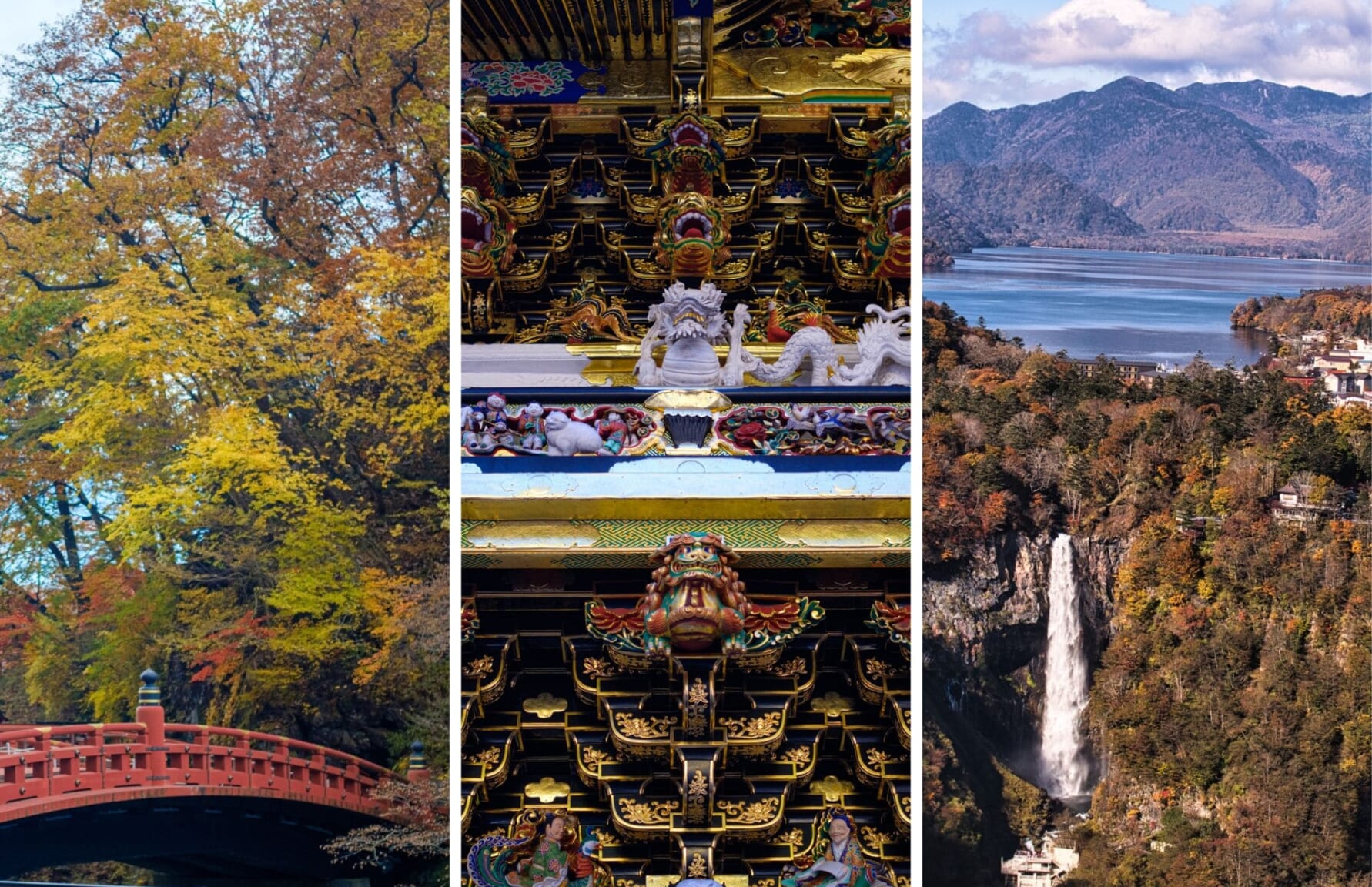
Once you arrive, your first stop is Toshogu Shrine (日光東照宮), a UNESCO World Heritage Site. The shrine is a marvel of intricate carvings and gold leaf, but what really catches your eye is the vivid autumn foliage that surrounds it. The red and orange leaves create a striking contrast with the shrine’s ornate details, making it a photographer’s dream.
After exploring the shrine, it’s time to venture to Lake Chuzenji (中禅寺湖). The lake is encircled by mountains covered in autumn leaves, offering a colorful panorama that’s a feast for the eyes. A boat ride on the lake gets you up close with the scenery, and it’s a peaceful way to spend an hour or two. The crisp air, the gentle sway of the boat, and the rustling leaves create an atmosphere of tranquil beauty.
But the natural wonders don’t stop there. If time allows it, make your way to Kegon Falls (華厳の滝), one of Japan’s highest waterfalls. The waterfall is especially stunning when framed by the autumn leaves, and the roar of the water adds a sense of grandeur to the whole experience.
Hungry? The area’s main local specialty is Yuba (tofu skin). Whether it’s in a hot pot or served cold, it’s a delicious must-try. As the day winds down, the setting sun casts a golden glow on the temples and the surrounding foliage, making for a serene and picturesque end to your day.
More info about Nikko: Nikko: Best Things to Do & How to Get to Nikko from Tokyo
Day 5: Mt. Fuji Day-Trip
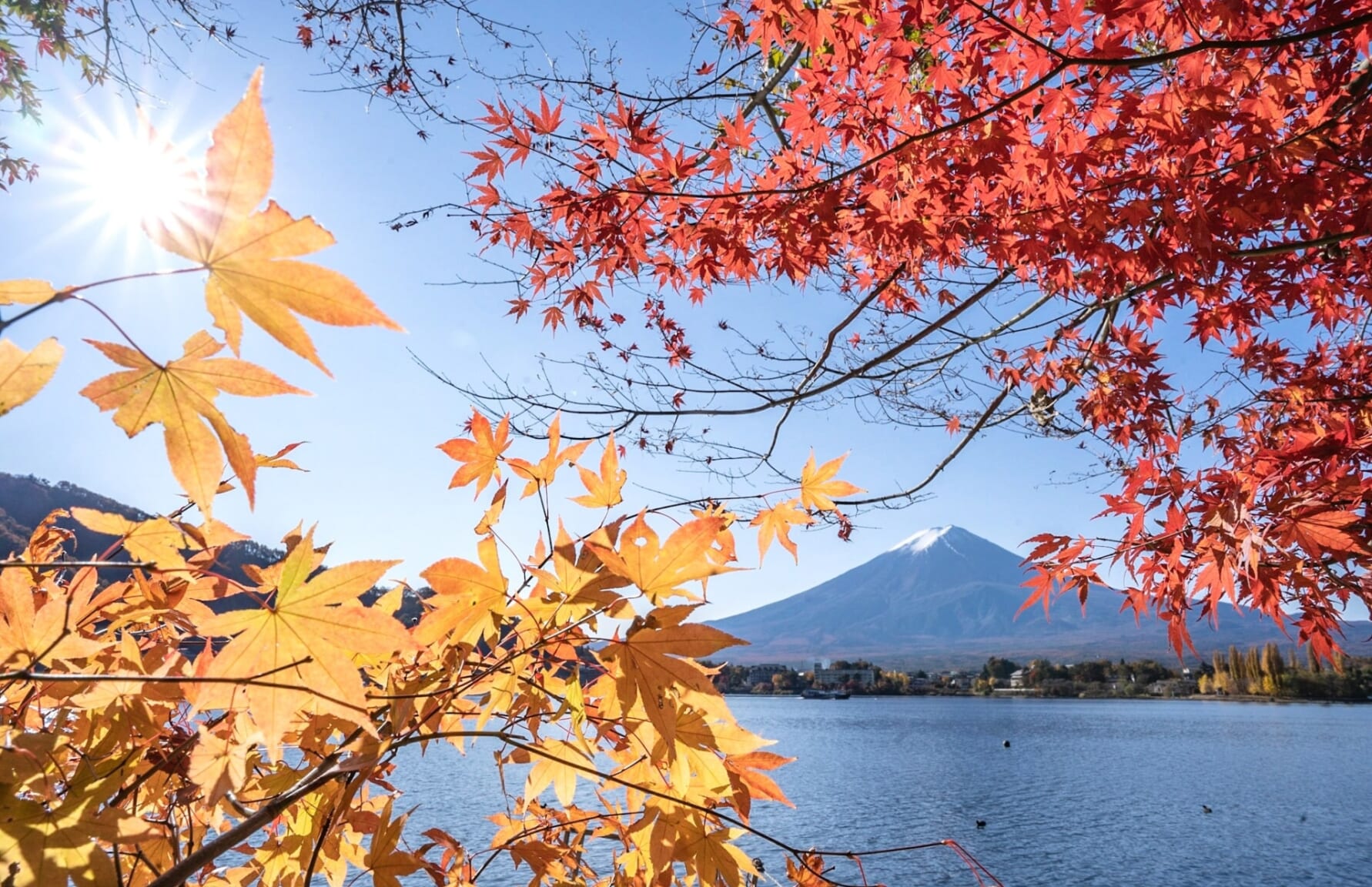
If your timing is good, you will be able to enjoy the Fuji Kawaguchiko Autumn Leaves Festival. The area around Lake Kawaguchi (河口湖) transforms into a vibrant display of autumn colors. The leaves, in shades of red, orange, and yellow, frame the view of Mt. Fuji in a way that seems almost surreal. Take a leisurely walk along the lakeside, where every turn offers a new, breathtaking vista.
Feeling adventurous? Hop on the Mt. Fuji Panoramic Ropeway (富士山パノラマロープウェイ) to marvel at the panoramic views unfolding before you as you ascend. From the observation deck, you can see Mt. Fuji in all its glory, along with the surrounding lakes and forests.
Lunchtime at Lake Kawaguchi offers a range of options from traditional Japanese meals to something quick and easy, in any case, the local eateries provide a cozy atmosphere to refuel before proceeding with the day.
As the afternoon progresses, a good option is renting a bike to explore the area further. The cycling paths around Lake Kawaguchi are well-maintained and offer yet another perspective on the stunning autumn landscape. As sunset approaches, Illuminations light up the autumn leaves, creating a magical setting. The reflection of the lights on the lake adds an extra layer of beauty to the scene. Don’t forget to confirm the return bus schedules!
Don’t miss all the details for your Mt. Fuji trip: How to Get to Mt.Fuji from Tokyo & 20 Best Things to Do in Mt Fuji Area: Mt Fuji Bucket List
Day 6: Odaiba and Sumida River
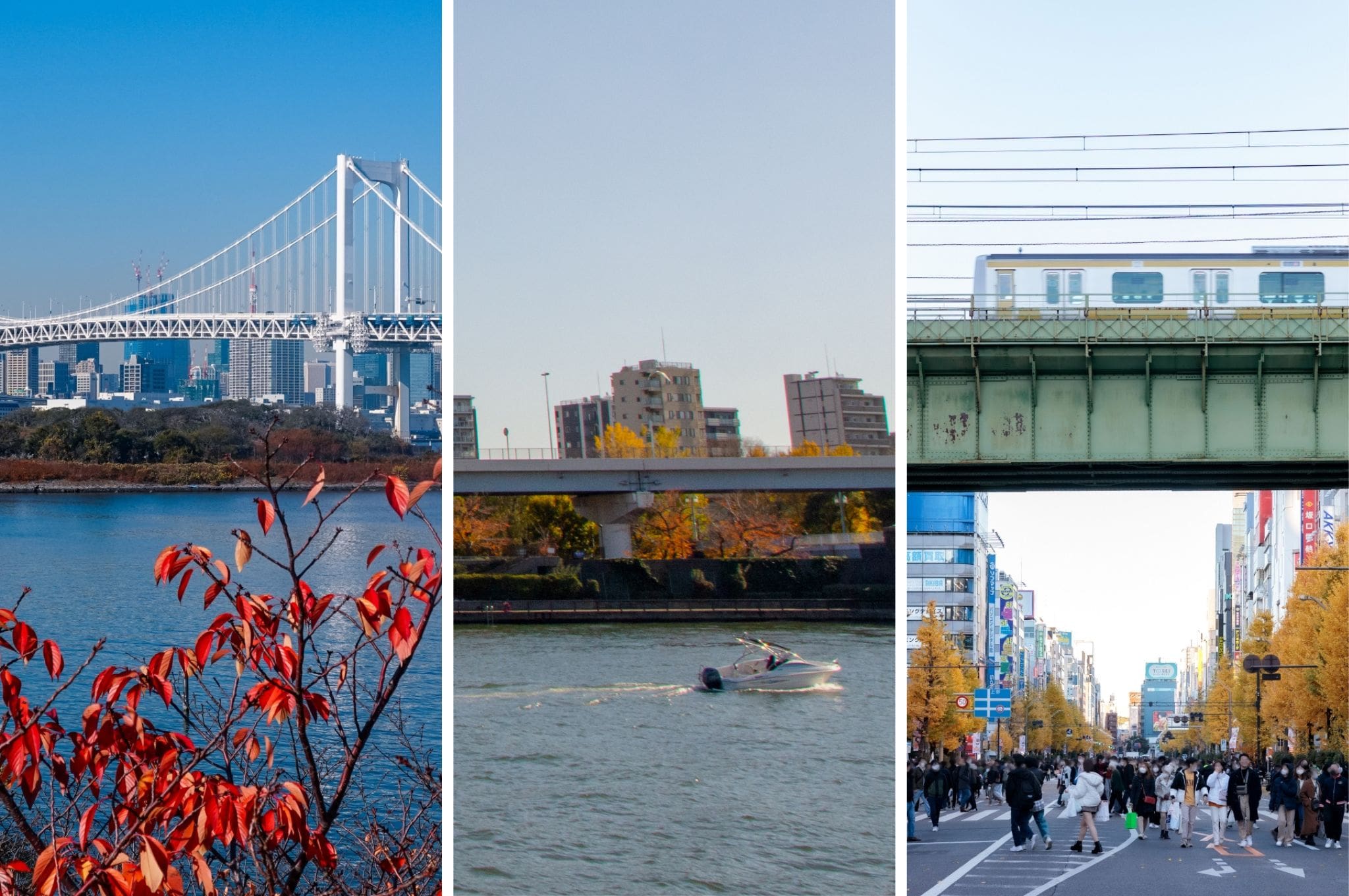
After the visual feast at TeamLab, it’s time for a different kind of journey—a cruise on the Sumida River (隅田川). Board the boat at Odaiba and let the cityscape glide by. The cruise takes you past some of Tokyo’s most iconic landmarks, all the while offering glimpses of autumn leaves along the riverbanks. It’s a relaxing way to travel and a chance to see Tokyo from a fresh perspective.
The cruise ends at Asakusa, but your day is far from over. Hop on the train to Akihabara (秋葉原), the mecca for electronics and anime culture. The streets are a riot of color and sound, with billboards advertising the latest tech gadgets and anime merchandise. If you’re a fan of either, you’re in paradise. Even if you’re not, the energy of Akihabara is infectious.
As the sun sets, the neon lights of Akihabara come to life, casting a glow on the busy streets. It’s a fitting end to a day that’s been all about diverse experiences—from the digital art of TeamLab to the natural beauty of the Sumida River and the pop culture extravaganza of Akihabara.
Check more ideas around Odaiba and Akihabara: 12 Best Things to Do in Odaiba & 15 Best Things to Do in Akihabara
<<Book your teamLab Planets TOKYO tickets here!>>
Day 7: Shinjuku

But there’s a peaceful haven called Shinjuku Gyoen (新宿御苑), one of Tokyo’s largest and most popular parks. The autumn colors here are spectacular, offering yet another chance to revel in the beauty of the season for the last time before leaving the city.
More information about Shinjuku: 20 Best Things to Do in Shinjuku & 20 Best Restaurants in Shinjuku Area
<<Book your Tokyo Wide Pass here!>>
Don’t miss our guides for transportation passes: Best Train Passes in Japan & Tokyo Subway UNLIMITED Pass: How to Get and How Much You Can Save
In just one week, you’ll have experienced a range of activities that will leave you both exhilarated and wonderfully exhausted, with options suitable both for nature lovers and city slickers. To get a complete overview of the season, this itinerary offers a perfect blend of Tokyo’s diverse attractions.
▽Subscribe to our free news magazine!▽
For more information about traveling and seasonal events in Japan, check these articles below, too!
▽Related Articles▽
▼Editor’s Picks▼
Written by
Photographer, journalist, and avid urban cyclist, making sense of Japan since 2017. I was born in Caracas and lived for 14 years in Barcelona before moving to Tokyo. Currently working towards my goal of visiting every prefecture in Japan, I hope to share with readers the everlasting joy of discovery and the neverending urge to keep exploring.






